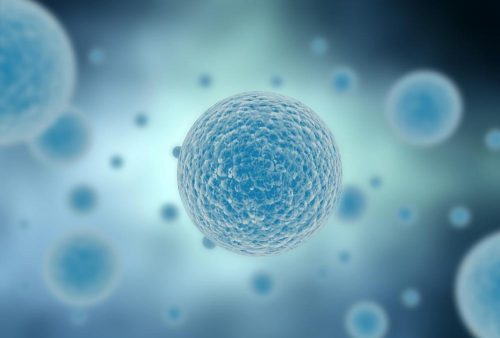DNA origami in nuclear pore complexes
Origami is a delicate art that creates elaborate structures from folding a simple sheet of paper. However, it is more than just an art; origami is also a technological method for modern biological research. The most complex parts of a cell may be recreated and studied from the simple folding of a single stranded DNA into desired shapes.
The highly compartmentalized organization of the cell allows for its proper function. Its complex structure dictates the movements within a cell and requires multiple moving parts to work correctly. Patrick Lusk, Yale associate professor of cell biology and ChenXiang Lin, Yale assistant professor of cell biology, used this DNA origami technology to better understand nuclear pore complexes and the basis for molecular communication that occurs between the nucleus and rest of the cell.
Nuclear pore complexes are large protein structures that are assembled into the nuclear membranes to help form the selective barrier that separates the nucleus from the rest of the cell. Acting as a gatekeeper, these proteins regulate which molecules enter and exit the nucleus. An incredible amount of material is exchanged at this surface in order for a cell to function properly, and so it is essential for these protein complexes to efficiently dictate what is allowed to pass through the nuclear membrane. Researchers have found that the selectivity of this barrier is determined by the presence of certain FG peptidess, named such because of the repeating phenylalanine (F) and glycine (G) amino acids and also referred to as FG-NUPS. But how the FG-NUPS physically gate the nuclear pore complex remains unknown as traditional microscopy methods are unable to visualize the movement and dynamics of the FG-NUPS in living cells
Melding nanotechnology and cell biology, Lusk and Lin engineered scaffolds using DNA origami to mimic the dimensions of the nuclear pore complex. Using this technique, the scientists built an artificial nuclear pore complex to fill with FG-NUPS in order to study their properties. This test-tube model allowed for them to recreate the structure of the nuclear pore complex on a nano-scale. With the help of colleagues at University College London, the researches visualized the movement of FG-NUPS for the first time and provided new insight in their role as molecular gatekeepers.
“If you really want to understand how something works, you have to build something up yourself,” said Lusk. By recreating this nuclear pore complex filled with specific FG-NUPS, the scientists were able to better understand the cell transport that occurs across the nuclear membrane. Creating a model and witnessing the movement of FG-NUPS within this complex showed the researchers how the nuclear complex simultaneously accepts huge proteins and blocks smaller ones from entering the nucleus.
DNA origami has not always been used to address biological questions. Lin hopes that this study of nuclear pore complexes will demonstrate the utility of DNA origami in biological research. “DNA nanotechnology is a powerful solution, but [it is] looking for problems [to solve],” said Lin. By coupling nanotechnology and cell biology, researchers can begin to address the unanswered questions of the complex workings of the cell.
Having built these DNA origami nuclear pore complex mimics, the team hopes to then incorporate this synthetic complex into a real membrane to see how the transport of different sized proteins actually occurs within a cell. Understanding how FG-NUPS are sorted within the nuclear pore complex allows for one to establish a set of rules for its organization and a systematic approach for determining the selective function of a nuclear pore complex. With this fundamental understanding, scientists can begin to build a synthetic cell. Knowing the exact structures and function of FG-NUPS within nuclear pore complexes can then allow one to recreate its selectivity in a different setting.
DNA origami is a powerful tool with vast potential within cell biology. By replicating complex aspects of a cell, scientists can obtain a better understanding of each individual function within a cell and incorporate their knowledge into making a fully functional synthetic cell. As the most basic unit of a living organism, cells hold incredible importance in an organism’s existence. With the first successfully synthesized cell, life at its most basic stage can then be placed in the hands of modern scientists.

